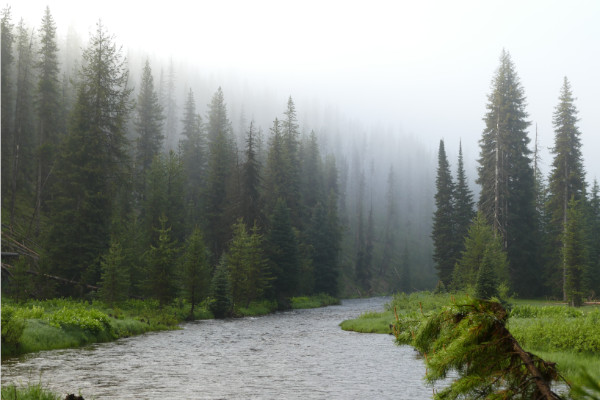
During the Clinton administration, public outcry over logging wildlands on national forests was amplified by campaigns such as Cove-Mallard in the Nez Perce National Forest. These actions rallied citizens from around the country to conduct direct action in protest of massive roadbuilding and clearcutting of roadless areas. Such publicity resulted in the Clinton administration proposing a nationwide regulation to limit exploitation of these remaining unprotected wildlands. The resulting 2001 Roadless Area Conservation Rule was touted as a major victory by many conservation groups.
In 2020, Friends of the Clearwater completed an investigation into the effectiveness of the 2001 rule—and another crafted in 2008 to apply to national forest lands within the state of Idaho—to preserve wilderness character of roadless areas.
Virtually unknown to the general public, we found the exceptions written into these rules were being exploited by the U.S. Forest Service, authorizing the development of roughly 39,000 acres of wild roadless areas in Montana and 18,000 acres in Idaho. Mostly this happened because loopholes allow industrial activities promoted as “habitat restoration”—a justification of logging by the Forest Service that has become ubiquitous. Use of these loopholes has accelerated since 2010.

In 2022, the House of Representatives passed a package of bills that would have codified the 2001, Idaho, and Colorado Roadless Rules as law. Because of the complete lack of knowledge of the problems of these rules on the ground, many in the conservation community saw this as a step forward. Luckily, the omnibus bill did not pass the Senate, and the roadless rules (and the loopholes they contain) are not federal law.
To permanently protect roadless areas, Friends of the Clearwater supports legislation that would close the loopholes of the various roadless rules and set a higher standard for their protection. FOC also supports a bill that would protect roadless country in our region that has been introduced into Congress several times: The Northern Rockies Ecosystem Protection Act (NREPA). Among other important provisions, NREPA protects as Wilderness essentially all the roadless areas in the Nez Perce-Clearwater National Forests and most other roadless areas in the bioregion defined by that proposal. You can learn more here.
Read the entire report below, or download the PDF a the bottom of the page.
Bilodeau-Macfarline-THE-ROADLESS-REPORT-FINAL-with-addendum-update-Sept.-2020Friends of the Clearwater
PO Box 9241
Moscow, ID 83843
(208) 882-9755